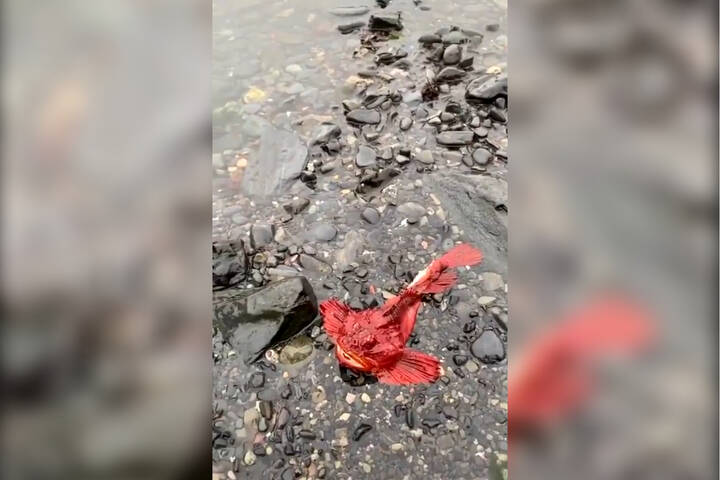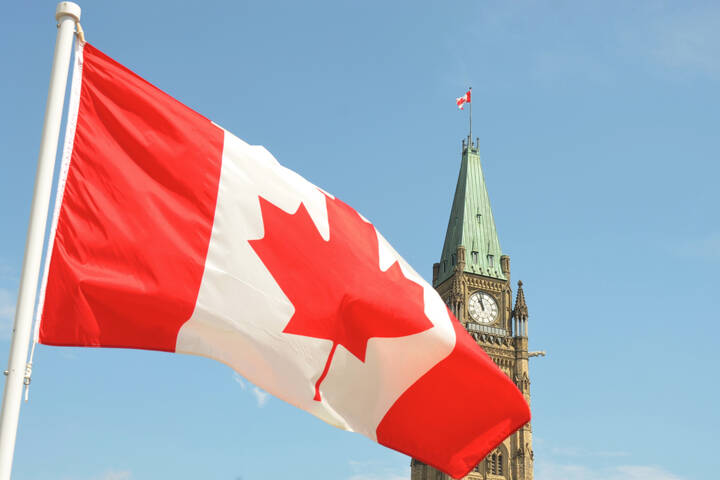
Shocking photos and videos show Fort McMurray in Alberta totally flooded
Residents of Alberta oil settlement Fort McMurray and the surrounding area are having to evacuate their homes this week for the second time in just a few years.
While the natural disaster the community of around 111,000 residents — many of them temporary, there working at the tar sands — faced in 2016 was a rampant wildfire, this time, it's quite the opposite: devastating floods.
Fort McMurray is once again being forced to redefine resiliency. https://t.co/zLC6RctlaN
— David Yager (@DavidLYager) April 28, 2020
Photos and videos of drowned streets have abounded on social media in the past two days as 15,000 residents in the lower part of the Wood Buffalo region have followed mandatory orders to leave their homes and take up residence in local hotels, which are now full, or ones en route to the cities of Edmonton and Calgary, more than four hours south.
Others are facing voluntary evacuation notices as flood levels rise.
Well the current situation in Fort McMurray is only getting worse!
— Dallas Tatlow (@DallasTatlow) April 28, 2020
Downtown has been under a mandatory evacuation as of yesterday morninghttps://t.co/I1TANXSvqI pic.twitter.com/h0iBtbABId
Those in the communities of downtown Fort McMurray, Draper, Waterways, Taiga Nova Industrial Park, as well as the hamlets of Anzac, Longboat Landing, Fort McMurray First Nation #468, Gregoire Lake Estates, Saprae Creek Estates, and others have been impacted, with some having to boil their water for fear of contamination and others experiencing power outages.
The municipality of Wood Buffalo has declared a state of emergency as a result, with entry to much of the area blocked off.
🇨🇦 #Canada : Des véhicules complètement sous l'eau hier à Fort McMurray (Alberta) pic.twitter.com/uDikMV0f3z
— Alexandre L_B (@alex_le_bars) April 28, 2020
The flooding started on Sunday and has continued to worsen, with cars and homes completely submerged.
Local officials are now asking the federal government for military assistance in the matter, and Alberta Premier Jason Kenney himself visited on Monday to assess the damage, calling it a "once-in-a-century situation," according to the CBC.
Joined @JasonNixonAB & @DanDWill in my office to speak with MacKenzie County Reeve Josh Knelsen & his emergency management team about the ice jams & floods in & around Fort Vermillion. @YourAlberta is providing all assistance necessary, as some 450 residents have been evacuated pic.twitter.com/xs55fpllI1
— Jason Kenney (@jkenney) April 28, 2020
The ongoing pandemic situation adds another layer to the mess, which was caused by a 25 km-long blockage of the Clearwater and Athabasca Rivers due to melting ice that displaced and jammed. Evacuation and repatriation procedures will have to take social distancing and other unique health and safety measures into account.
Fort McMurray Canada major flooding worried for family who live in area.
— ButterflyJM (@jenn82319646) April 28, 2020
photos are NOT my own. pic.twitter.com/20iSqQp8Kt
The fact that the local economy is reliant on the oil industry also poses a unique hazard to both residents and the environment amid the flooding: the toxic waste that is a byproduct of mining the tar sands.
This doesn't even factor in potentially devastating environmental impacts that could happen should the oilsands tailing ponds down river from Fort Mac get flooded out.
— fernando STAY INSIDE melo (@FernandoLeft) April 28, 2020
This crisis is both human and environmental.
There have been alleged and unconfirmed reports that these tailings may have already been breached by floodwaters — something that, if it hasn't happened yet, remains a possibility.
This is a fear for many in the community, and would mean widespread catastrophic contamination to the area.
As the Athabasca River breaches and spills into Fort McMurray, it is possible that toxic #TarSands tailings are being introduced into the flood water. I hope this is not true, but if not now, history tells us it will happen soon enough. pic.twitter.com/J0LKXXuL2M
— Trevor Parsons (@DartmouthCommon) April 28, 2020
With all of the unprecedented natural and human disasters that have taken place in Canada and worldwide over the past four months, it's apparent that 2020 is shaping up to be a year of devastation.
Latest Videos
Join the conversation Load comments







